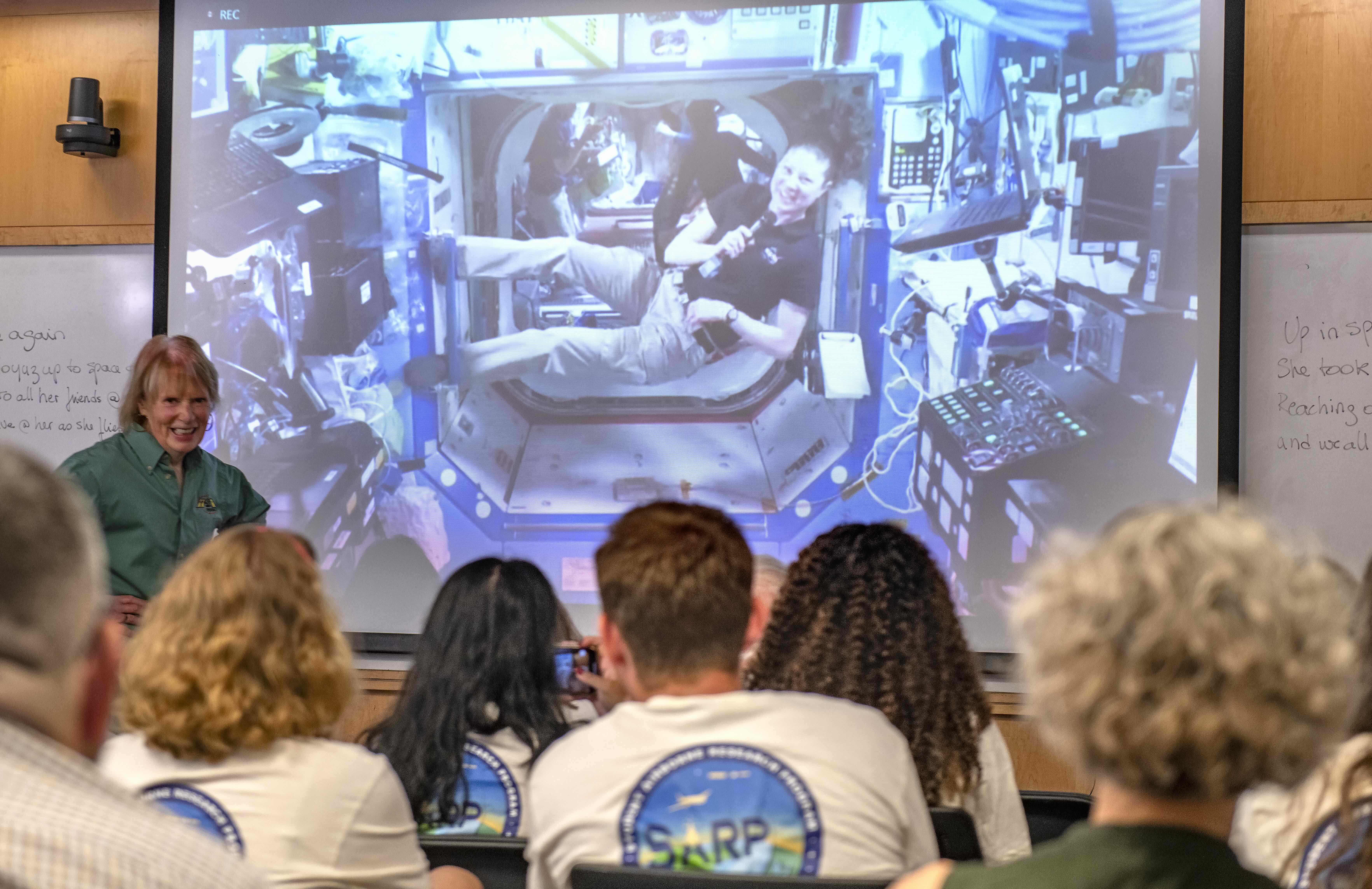UCI and AirUCI host livestream chat with NASA astronaut Tracy Dyson

NASA astronaut and former UCI postdoc Tracy Dyson tunes in from the International Space Station.
Before former UC Irvine postdoctoral fellow Tracy Dyson came to campus in 1998, she let her soon-to-be faculty mentors, Professors Barbara Finlayson-Pitts and John Hemminger of the UCI Department of Chemistry, know something important: she was in the middle of applying to become a NASA astronaut, and if she got the job it meant she would have to cut her postdoc short.
Hemminger and Finlayson-Pitts knew the astronaut dream was a long shot – after all, less than one percent of applicants actually make it into the astronaut corps – so they hired Dyson, who’d just finished her Ph.D. in chemistry at UC Davis. Dyson came to UCI and studied how to measure exotic air pollutants as part of the Atmospheric Integrated Research (AIR) group.
But a year into her postdoc, Dyson got the call: NASA wanted her.
UCI lost a postdoc, but it gained a scientist-astronaut colleague who over a decades-long career in space regularly returns to campus to talk about her experiences. Now, on Monday, July 8, Dyson tuned in live from the International Space Station and greeted a crowded room in the Natural Sciences II building that included undergraduate students enrolled in Professor Don Blake’s Student Airborne Research Program.
The video feed went live, and there was Dyson, floating in mid-air, her curly brown hair bouncing every which way. Finlayson-Pitts started asking some prepared questions, like what it’s like watching Earth from space.
Watch Now: NASA Astronaut Tracy Caldwell Dyson calls AirUCI from the International Space Station
“It’s almost like seeing an infant swaddled in its blanket,” said Dyson, who explained how Earth and the life it cradles feel especially vulnerable against the infinite backdrop of space. “It just affirms how important it is that we protect and take care of our environment.”
Dyson described her journey to becoming an astronaut. She said astronauts come from all different walks of life, but that one thing unites them: they all enjoyed what they were doing before joining the astronaut corps, and that you need that energy and enthusiasm to help carry you through the rigors of astronaut training. “When you really enjoy what you do, it brings out the best in you,” Dyson said.
“It’s wonderful,” said Finlayson-Pitts after the event. “Everyone was mesmerized and so inspired, students were walking on clouds leaving the room. That, and every time Dyon’s gone up she’s come back and given a talk at the Beckman Center. We hope she will again visit when back on Earth.”
